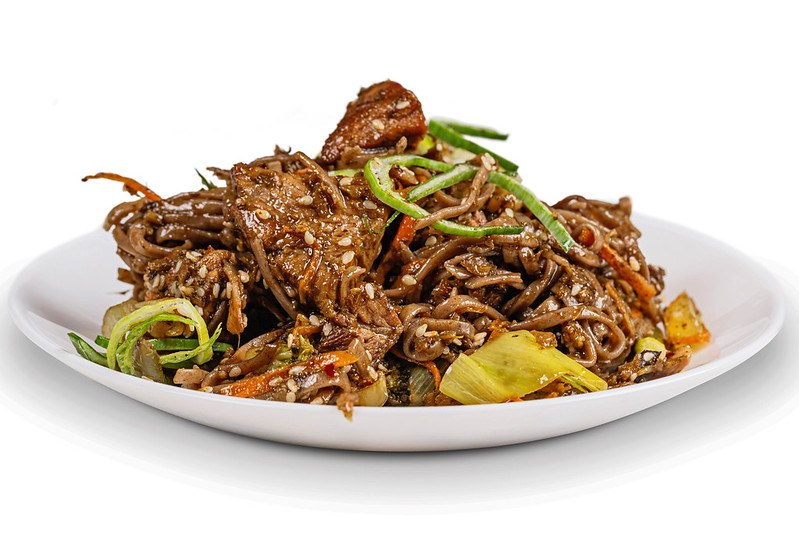The main distinction between soba and udon noodles is that soba is made from buckwheat flour, while udon is made from wheat flour. Both types of noodles are popular in Japanese cuisine and can be found in Japanese-style restaurants worldwide. Soba is considered healthier than udon due to its lower fat and calorie content, as well as the nutritional benefits of buckwheat flour, which includes vitamin B, protein, fiber, iron, and carbohydrates.
Key Takeaways
- Soba noodles are made from buckwheat flour, while udon noodles are made from wheat flour.
- Soba is considered healthier than udon due to its lower fat and calorie content and the nutritional benefits of buckwheat flour.
- Both soba and udon noodles are popular in Japanese cuisine and can be found in various dishes at Japanese-style restaurants around the world.
What is Soba?
Soba is a long, thin noodle strand made of buckwheat flour and water. It became popular around the 1700s and is now available in almost any Japanese restaurant. Soba has a nutty flavor and ranges in color from light to dark brown due to the presence of buckwheat flour. Traditional soba noodles contain 100% buckwheat flour, making them healthier as they have fewer carbohydrates and are lower in calories. Soba also contains all eight essential amino acids. Buckwheat is nutritious and helps maintain energy levels, and there are even gluten-free soba varieties available.
Soba can be served hot or cold, with popular dishes including Kake Soba, Tempura Soba, and Zaru Soba. Other varieties of soba include Yaki Soba, Kitsune Soba, Tsukimi Soba, Yamakake Soba, and Oroshi Soba.
What is Udon?
Udon is a type of Japanese noodle made from wheat flour, water, and salt. It is typically served hot in a dashi-based broth. Udon noodles are thicker than soba noodles and can be either flat or rounded. The dough for udon is somewhat difficult to knead and must be kneaded for several minutes until smooth before being covered and left to rest for at least an hour. After being rolled out to a thickness of about ¼ inch, the dough is sliced into noodles, dusted with flour or cornstarch, and cooked immediately in simmering water for 5-10 minutes.
Udon noodles can be found fresh or dried and must be boiled before eating. They have a slippery and chewy texture. Famous udon dishes include Kake Udon, Miso Nikomi Udon, Curry Udon, Kitsune Udon, Udon Suki, and Yaki Udon.
What is the Difference Between Soba and Udon?
The key difference between soba and udon lies in their ingredients, with soba being made from buckwheat flour and udon from wheat flour. As a result, soba is lower in fat and calories and considered healthier than udon. In terms of texture, soba is firm and dense, while udon is chewy and springy. Soba has a strong earthy and nutty flavor, whereas udon has a more subtle taste. The color of soba noodles ranges from dark brown to grey, while udon noodles have a glossy white appearance, due to their composition.
Summary – Soba vs Udon
In summary, soba is a long, thin noodle made from buckwheat flour and water, while udon is a Japanese noodle made from wheat flour, water, and salt. Soba is considered healthier than udon because of its lower fat and calorie content and the nutritional benefits of buckwheat flour. The appearance and taste of the two types of noodles also differ, with soba being darker in color and having a nutty flavor, while udon is glossy white and has a more subtle taste.
